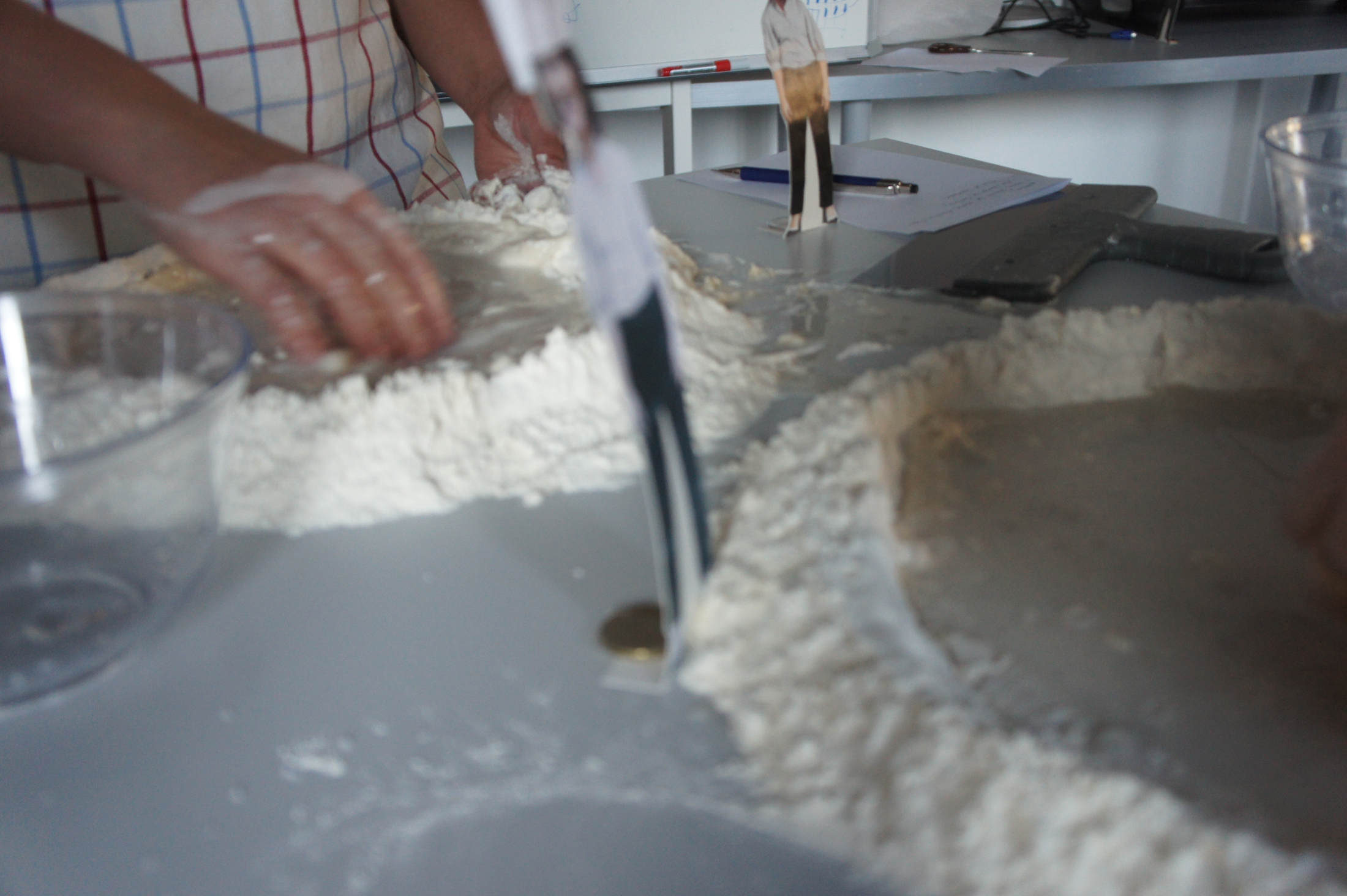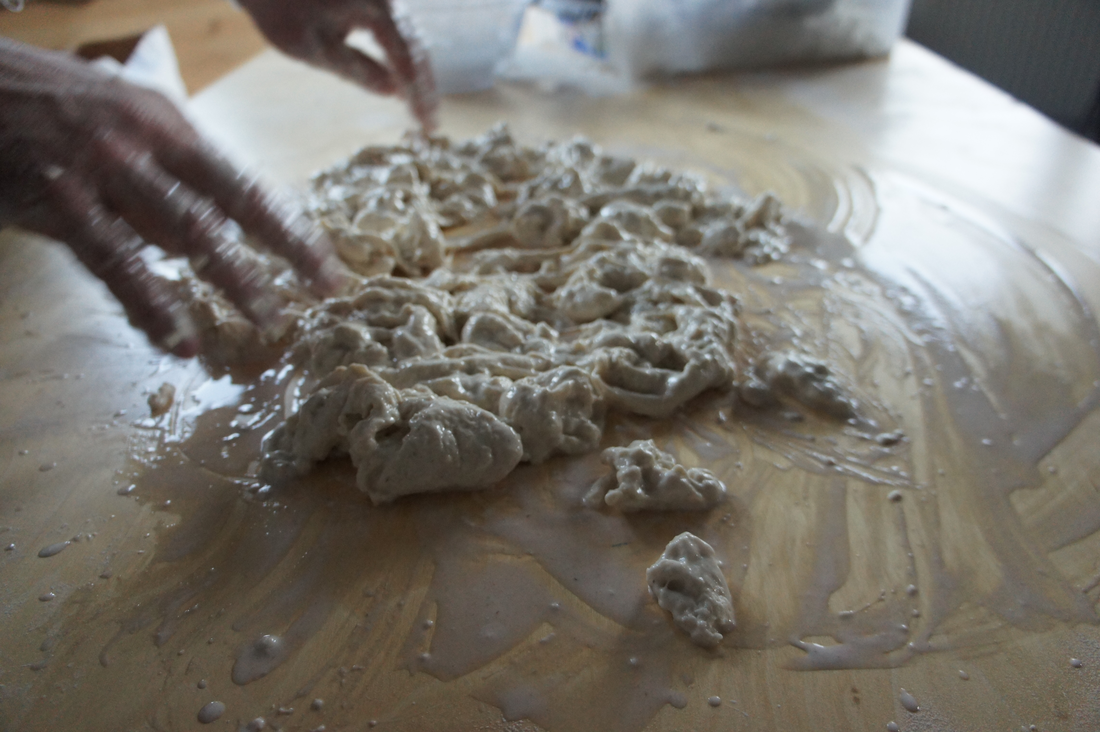Starting the Felt Time Research
Time is one of the most powerful influences on our thoughts, emotions, and actions, yet we are usually quite unaware of the effect of time in our lives. A clock offers great advantages for scheduling events and dating past experiences. Clock time divides our lives into hours, minutes and seconds, forming the temporal framework around our jointly-organized lives. The motivation of our research is a growing concern around the aesthetics of time and technology in interaction design. Researchers have, for example, pointed to a number of key areas where time is related to design. Technology is implicated in the speeding up of everyday life (Lindley 2015). There is a challenge of designing collective and personalized time (Mazmanian et al 2015). Time traps in social media are another issue (Harper et al. 2008) as well as the aesthetics of felt time in interaction design (Kosmack Vaara 2017, Löwgren & Stolterman 2004) and the hand-mind dichotomy in Western philosophy (Heldke in Curtin & Heldke 1992).
Our research is a collaboration between Cheryl Akner Koler; sculptor, teacher and professor in aesthetics, the connoisseur baker Sebastien Boudet and Elsa Kosmack Vaara; design researcher. We worked together to prepare, perform and analyze our inquiry. We connect the culinary practice of sourdough baking with questions from interaction-design research, to explore a space where we can prototype felt time experiences (for more on prototyping see: Buchenau & Suri 2000; Djajadiningrat, et al 2007; Kurvinen et al 2008; Wensveen & Matthews 2015).
A central aspect of the research endeavor is that we do not propose to reduce the complexity of prototyping felt time. Instead the research is characterized by exploration into which different ingredients, activities, and experiences are bound together to create subtle discussions.
Aesthetics, Sourdough Baking and Felt Time
Felt rhythms are a feature of almost any humanly composed form of time — the temporal patterning of work is an obvious example, as is the shape of music (Langer 1953). We refer felt time to a pragmatist aesthetics view. This approach to aesthetics is strongly influenced by Dewey’s pragmatism, in which aesthetics is equally a fulfilling, entire experience (Dewey 1980 (1934)). It starts with felt experience which tries to encapsulate a person’s full relationship — sensory, emotional, and intellectual — with her physical and social environment. It is committed to our need for sensing the meaningfulness and wholeness of our actions from which a sense of self emerges, develops, and transforms.
According to Langer (1953) the experience of time is not only that of a length or interval between selected moments, it has volume. This volume is filled with fluctuating tensions — physical, emotional or intellectual — which make it exist for us. She describes the elements of music as sounding forms of time. As we listen to the sound of time through music, our imaginations are provoked and our bodies entranced. We can find ourselves moving in time, somehow imagining we are being moved in adherence to the sounding temporal forms. Thus, the temporal experience in music is not easily measured or interpreted by logical, practical or scientific formulations (such as, clock-time), but rather in terms of movement, sensibilities, tensions and emotions (Langer 1953; Unander-Scharin et al 2014).
Felt time may also be considered as the basic-level dynamics of interactions among the human senses, emotions, and time (Shusterman 2012). Through his Somaesthetics philosophy, Richard Shusterman promotes bodily awareness in everyday life. He reminds us that all human experiences and interactions with the world are performed through our bodies. We emphasize that our aesthetic responses are motivated by our individual real experiences, thoughts, cultural background and emotional feelings. We consider aesthetics to emerge from the holistic, embodied experience that cannot be treated separately, as some kind of complementary component to others [Akner Koler 2007; Lim et al 2015; Höök 2018; Petersen et al 2004; Dewey 1980 (1934); Langer 1953; McCarthy & Wright 2004; Haptica 2018).
Sourdough baking does not belong to the traditional philosophical feature of knowing that produces “timeless truths” (Heldke in Curtin & Heldke 1992) and neither does interaction design. However, both practices are concerned with the changeable. Practical, lower activities involve us in the physical, temporal world in ways we cannot ignore while “objects of genuine knowledge escape the ravages of time; they exist today, tomorrow, and yesterday.” This can be connected to the present-day attitudes toward time in food preparation (as displayed by advertising, by cookbooks, by conversations at the coffee table) that emphasize the value of ease, speed, and efficiency (Heldke in Curtin & Heldke 1992).
Sourdough Baking - a Thoughtful Practice
In his book The French Baker [Boudet 2012] Sebastien Boudet writes of his fascination with the fact that so many people bake bread in Sweden. Despite this fact, there are shortcomings in their knowledge about quality of materials and the ‘soul’ of the recipe. According to Sebastien, there is a widespread confusion regarding what methods and ingredients to use. Sebastien points to the difference and tension between the sourdough baking process, which makes use of natural yeast microorganisms, and the baking process based on industrially-produced yeast.
Sourdough baking is a cyclic culture, in that the starter containing the microorganisms that promote the chemical process and the fermentation, originate from previous baking. The starter, the baking ‘system’, is carried forward in time through the sourdough baking technique and tradition. In comparison to bread baked with industrially produced yeast, sourdough baking offers a tremendous variation in texture, appearance and taste (Boudet 2012). The rhythm of work in sourdough baking is shaped to fit the amount of bread that is going to be baked, but the changeable, inconstant ingredients and environment demand the baker to recreate the process every time it is performed. This requires the baker to constantly exercise and improve baking skills. The sourdough baking timeframe is created again and again in each baking process and the result (the taste and feel of the bread) depends on the baker’s craftsmanship and sense of time through the dough. Baking with industrially-produced yeast is efficient. It is expected to produce bread within a certain clock-time measurement that can fit into a strictly scheduled life. It proceeds fast, and we know what kind of result we get.
In Sebastien's descriptions of the tension between, on the one hand control and efficiency, and on the other hand, felt time and the less-standardized form of baking we see a parallel dilemma in the ways time is treated in the Western world and in interaction design.
The reason that people in the Western world believe we need to hurry through ordinary life’s physical processes has to do with the philosophical view that ‘pleasant’ tasks such as contemplation and timeless literature are ‘higher’ activities than the practical and dirty ‘hand’ activities that involve us in a temporal world bounded by time and doesn't “produce anything that will stay with a person for good” [Boisvert & Heldke 2016; Heldke in Curtin & Heldke 1992).
In the Western world the subjective feel is also that there is an acceleration of time due to technological progress and digitalization. People can take part in events around the globe almost without delays which gives them a sense of real and real-timed experience (Förster-Beuthan 2012). Yvonne Förster-Beuthan suggests that time will be increasingly experienced as “thicker” or “deeper”, as the hyperconnected world with all its objects and services enables us to get access to information from various layers of time - past, present and simulations of the future - at the same time.
We invite our readers to think about sourdough baking as a “theoretically practical” activity: a “thoughtful practice” (Heldke 2016).


